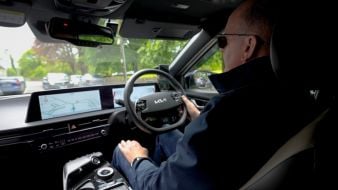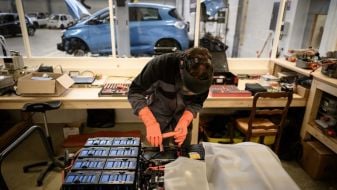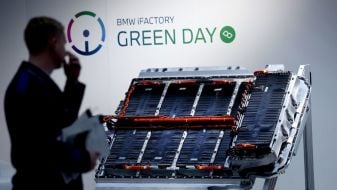Cars are becoming increasingly tech-heavy, and are ever more extensions of our phones, our tablets, and our digital lives. This means that modern motoring exists in a jungle of jargon and tech-speak, which can sound impressive, but does it actually translate into something that’s genuinely useful to you? Here’s our guide to the best and worst of current car technology…
AC
Stands for alternating current, the same electric power supply you have at home. Used to charge an electric car’s battery, and it’s the best way to fully charge without damaging the battery with too much current. Home chargers usually run at around 7.4kW power, but on-street chargers can work at up to 22kW, which is great if you have an electric car (a Renault or Nissan, mostly) which can accept a full 22kW AC charge. Most electric cars only charge at a maximum of 11kW on AC power, though.
Useful/Useless? More than useful — massively necessary if we’re going to make the switch to electric motoring.
ACC or Adaptive Cruise Control
This is a system that uses a combination of a radar unit (usually mounted behind the grille or in the front bumper) and a camera (mounted in the windscreen) to keep you at a pre-set speed and a safe distance from the car in front. If the car in front slows down, the system will automatically slow you down to match its speed. It can take the strain out of long motorway drives, but some systems can be erratic in how they respond to traffic.
Useful/Useless? Useful, but you still need to be alert and pay attention.
AEB or Autonomous Emergency Braking
This uses the same radar and camera sensors but instead of cruising along, they detect if you’re heading towards an obstacle — another car, a pedestrian, a cyclist — and can actually slam on the brakes to perform an emergency stop if the computer reckons that an accident is otherwise unavoidable. The system will warn you first with an alarm and a flashing red light. The most sophisticated versions also work in reverse (to prevent parking accidents or pulling out into oncoming traffic) and even active steering which can help to swerve you away from danger. They’re not foolproof — the idea is to slow the car down enough that any impact is lessened, rather than guaranteeing to avoid a collision altogether, and the sensors can be obscured by heavy rain, dirt, or even a low angle of sun.
Useful/Useless? Useful. In fact, genuinely life-saving and vital equipment these days.
AQS — Air Quality System
To improve passenger protection, some cars — and the new Peugeot 308 is one of them — are equipped with an AQS (Air Quality System) which constantly monitors the quality of the air entering the passenger compartment and automatically activates the recycling function if pollution is detected. In the Peugeot, the AQS is complemented on high-spec models by the Clean Cabin, an air treatment system with filtration of polluting gases and particles. In addition, the air quality reading is displayed on the central touch screen so you know what you’re breathing in…
Useful/Useless? Hugely useful, especially if most of your driving is in town.
Automatic
Usually refers to the car’s gearbox. An automatic gearbox changes gear for you, and the latest models can have as many as eight, nine, or even ten speeds. There are, broadly, three kinds — a ‘traditional’ torque-convertor automatic, which uses the engine’s speed to turn a fluid coupling to turn the gears; a dual-clutch (sometimes referred to as a DSG, or DC-T) which uses clutches, like a conventional manual gearbox, but which is entirely computer-controlled; and a CVT, or continuously variable transmission, which is usually used in hybrid-engined cars and which uses a series of belts, pulleys, and electric motors to drive the car’s wheels. In an automatic car, there is no clutch pedal for you to use, just a brake and an accelerator, and they’re impossible to stall. Electric cars are referred to as having an automatic gearbox, but in fact usually have only one speed, as the speed of the electric motor can be infinitely varied, meaning you don’t need a traditional gearbox. A good automatic gearbox will actually save you fuel (and emissions) compared to an old-school manual.
Useful/Useless? Useful, and increasingly common, but we miss the tactility of a traditional manual shift.
BLIS

BLIS stands for Blind Spot Information System. It’s a safety system that uses the rear-facing parking radar to keep an eye on your blind spot on the motorway. If you signal to pull out into the lane next to you, and there’s a car within your blind spot, you’ll get a warning light to let you know to wait a tic. Some systems will actually inhibit the steering a little to try and prevent you pulling out and causing a crash.
Useful/Useless? Useful.
CCS
Combined Charging System, or the basically-accepted standard for rapid DC electric car charging. You’ll recognise a CCS charging connector from its ‘double-decker’ shape. Only a tiny number of electric cars won’t accept a CCS charger these days (mostly older Tesla and Nissan Leaf models) and it’s the most powerful charging system you can use, at up to 350kW depending on the provider. CCS charging can be expensive, though — as much as 79c per kWh.
Useful/Useless? Hugely useful, but reliable? Convenient? Not always…
Connected safety
This is a system developed by Polestar, which uses the in-car cloud connectivity via the Android powered Google Automotive system that Polestar was the first auto brand to use. The system keeps the driver informed about road conditions and potential hazards on route thanks to warnings issued from other road users and official sources.
Useful/Useless? Potentially hugely useful, especially as others start to use the tech too.
Crossover
Not technically tech, but a ‘crossover’ is increasingly the car we’re all buying. They — in theory, at any rate — give you the space and practicality of a big, chunky SUV, but with the running costs and easy-driving of a smaller hatchback or estate. Think Nissan Qashqai or Hyundai Tucson.
Useful/Useless? Actually useless — a good estate is way more practical and usually nicer to drive, but that doesn’t seem to matter to most people…
Dampers
You’ll often read mention of ‘dampers’ in car reviews. The dampers are what we used to call shock absorbers, and their job is literally writ in their name — they damp the movements of a car’s suspension, giving you a smoother and more stable ride. Many expensive and high-performance cars now use adaptive dampers, which have adjustable settings. When you select Sport or Comfort mode on the dashboard, these dampers will stiffen up or soften off accordingly, theoretically giving you sharper control, or softer comfort settings.
Useful/Useless? Adaptive dampers have their uses, but to be honest in most daily driving they’re a bit superfluous.
DC
Stands for direct current, and is the fastest way of charging an electric car. Usually works at speeds of 50kW and above, and is designed to rapidly charge an electric car’s battery from almost-empty to 80 per cent. Generally speaking, rapid charging above 80 per cent is damaging to the battery and isn’t recommended (also, other people need the charger so shift…). The most powerful chargers work at up to 350kW and, for some models (Hyundais, Kias, Audis, and Porsches mostly) can do an 80 per cent recharge in less than 20 minutes. However, electric supply issues mean that many rapid DC chargers don’t, or can’t, work at their full capacity all the time.
Useful/Useless? More vital than useful, but DC charging availability and reliability is still patchy.
Digital dashboard
The now-common practice of replacing traditional analogue instruments and dials with a digital screen. The best systems allow you to pick and choose both the information you want your dashboard to display, and the style in which you want it displayed. The worst ones are a confusing mish-mash of colours and lights which don’t seem to make sense. The really, really worst ones are overly-bright and distracting, especially at night.
Useful/Useless? Jury’s still out…
Digital key
Many car makers are now using the same RFID technology that powers contactless credit cards to allow you to use your phone or smartwatch as a car key. Just hold the device near the door and the locks pop, the immobiliser switches off, and you can be on your way. It’s especially useful for those who enjoy active sports — no need to worry about lugging car keys with you or shutting stuff up in lockers — and it’s especially good if you take part in sports or activities involving water.
Useful/Useless? Potentially very useful — until your phone runs out of charge
E-Call
Now mandated as standard equipment for all new car, E-Call is an emergency system that uses a built-in SIM card within the car’s electronics to ring the emergency services if it detects that you’ve had an accident but are not responding by opening the seatbelt or the doors. The system works automatically, and gives your location to the emergency services, or you can trigger it yourself — and not just if you’ve had a crash; the system is designed to be used so that you can report someone else having a crash if you’ve witnessed it.
Useful/Useless? Hugely useful.
ESC or Dynamic Stability Control
Originally developed in the 1980s (by Bosch, which markets it under the ESP, or Electronic Stability Programme name) ESC has become a standard-fit on all modern cars, and has been a legal requirement within Europe since 2014. A development of anti-lock braking systems (ABS) ESC uses sensors on the wheels, the engine, and the steering to work out if your car is starting to skid or slide. If it detects a skid, the system can activate individual brakes on each wheel, helping to pull the car straight again and give you back control. You’ll know it’s working if you feel a juddering sensation and see the ESC light, usually a yellow one, flashing on the dashboard. Sometimes known as Dynamic Stability Control (DSC)
Useful/Useless? Useful. Quite brilliant in fact.
EV
Stands for electric vehicle. Generally, we use the two-letter acronym EV to mean any car that’s driven by electric power alone, but actually there are different variants. A BEV, or Battery Electric Vehicle, is a car (or van) driven only by electric power stored in a battery (like Tesla, or a Volkswagen ID. model). Or you can have a HEV, or Hybrid Electric Vehicle, which combines petrol or diesel power with an electric motor, such as a Toyota Corolla. From that springs a PHEV, or Plug-in Hybrid Electric Vehicle, which combines combustion and electric power, with a battery big enough to be charged up for short electric-only hops, such as a BMW 330e or Toyota RAV4 PHEV. There’s also MHEV, which is a Mild Hybrid Electric Vehicle, which isn’t really electric at all, but which just uses a petrol or diesel engine with a beefed-up electrical system that allows it to coast on downhill sections, or use its stop-start system more in traffic (such as a VW Golf e-TSI). Finally, there’s FCEV, which is a Fuel Cell Electric Vehicle, which uses hydrogen gas, passing it through a fuel cell to generate electricity to drive an electric motor. These are very rare indeed, and for the moment aren’t available in Ireland.
Useful/Useless? Useful — indeed, all cars are going to be an EV of some description from pretty much now on.
Gesture control
Want to look like a magician? By magically waving your hand in front of in-car sensors, you can turn the stereo volume up or down, or change the radio station, or even open and close the sunroof. Sounds cool? It’s actually the worst kind of gimmick, and is incredibly hit-and-miss as to whether it will work or not. Often, you start trying to trigger a response from gesture control only to find it’s not recognising your gesture, so you just revert to pressing the touchscreen instead. Some cars have gesture control, steering wheel buttons, touchscreen controls, and voice control for the same function, which seems completely daft and redundant.
Useful/Useless? Utterly useless
Haptic buttons
Haptic buttons are not buttons at all. They’re actually little touch-sensitive pads, rather like miniature laptop trackpads, which recognise that you’ve touched them and carry out the function that you’ve requested. To be helpful, they then give a little response, a haptic ‘click’ that makes it feel as if you’ve actually pressed a button. Except it doesn’t really, it just feels odd, which means you end up looking down at the steering wheel (where haptic buttons are most commonly used) or the touchscreen to make sure you’ve pressed the right thing, taking your eyes and attention off the road. In theory, haptic buttons can perform different functions under different conditions, which sounds handy but which is actually just more confusing and more distracting. Thankfully, some car makers seem to be realising this, and the haptic button’s days appear to be numbered.
Useful/Useless? More distracting than anything else
HUD
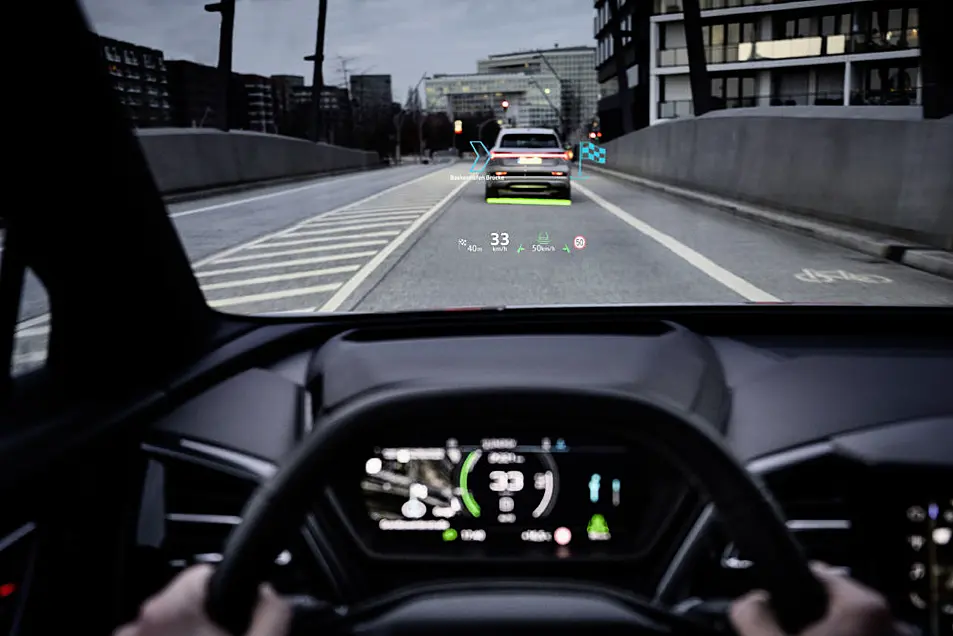
A HUD, or heads-up display, comes from fighter jet technology. The idea is that a mirrored projector shines important information onto the windscreen, such as your speed, the current speed limit, and sat-nav directions. The idea being that it’s closer to where you’re looking at the road ahead, and therefore easier and quicker to see and read. Downsides? Some HUDs can be a bit blurry, or poorly projected while others can’t be read if you’re wearing polarised sunglasses.
Useful/Useless? Useful — with caveats.
Hybrid
A car that uses a mixture of combustion and electric power, the most commonly-seen of which is Toyota’s range of hybrid models. The best ones combine ease-of-use with impressive all-round fuel economy and low emissions. The worst ones are noisy and slow (but there aren’t too many of those left now).
Useful/Useless? Useful — arguably a better medium-term solution than electric cars, but that’s another day’s discussion.
Infotainment
A catch-all phrase which encapsulates all the non-vital systems you’ll find in a car, from the stereo to the sat-nav to the way in which your phone connects to the car. Usually these days all controlled by a large touchscreen in the centre of the dashboard. The best ones of these are intuitive to use and actually make your life easier. These are rare, though, and many of these systems are to confusing to use and have nonsensical menu layouts, forcing you to work your way through multiple sub-screens to get to the thing you wanted to change. The ones that have heating and ventilation controls only on the screen are often the worst. Physical buttons are still good, you know…
Useful/Useless? It’s a 50:50 split decision.
Isofix
The standardised latching system for fitting a child car safety seat to your car. Under the edges of the seat’s backrest, there are steel rings onto which the catches at the base of an ISOFIX-equipped child seat will lock on. It’s safer, because the child seat is now rigidly attached to the structure of the car, and it’s more convenient — no faffing around with stretching seatbelts around. Downsides? The child seats can be heavy, and ISOFIX points are standardised, but the covers over the steel rings aren’t and it can be confusing switching between covered, uncovered, etc. Some car makers actually use incredibly annoying zip-up covers for the ISOFIX latches. Can’t understand that at all…
Useful/Useless? Useful, and another life-saver]
i-Toggles

These are really cool, and at the moment are specific to Peugeot models, but expect to see this kind of tech spread fast. The new 308 and 408 use customisable i-Toggles — customisable digital shortcut buttons for the infotainment system — located under the central screen which can be assigned to the functions most used by the driver or passenger, such as shortcuts to specific air conditioning settings, a radio station, favourite telephone contacts, navigation to home, etc.
Useful/Useless? Definitely useful — makes navigating a touchscreen so much easier.
kWh/100km
kWh is, of course, a measurement of the power held in an electric car’s battery. It’s a shortened version of kilowatt/hour, and in basic form 1kWh means that the battery can provide one kilowatt of power for one hour. In car terms, kWh/100km is the modern day miles per gallon, and is a measurement of how much of your battery’s stored energy you’ll use for each 100km travelled. We’re still getting used to exactly how economical cars are in general, but a good rule of thumb for now is that the most efficient models will generally return a figure of 16-18kWh/100km in mixed driving. Anything above 22kWh/100km is pretty ‘thirsty.’ Some manufacturers, Mercedes especially, are aiming for averages of less than 10kWh/100km in mixed driving.
Useful/Useless? Useful — allows you to do Apollo 13-style mental maths as you sweat over reaching the next charging point.
LKAS
Lane Keeping Assistance System, or lane-keeping steering is a system which uses the same forward-facing camera that controls the autonomous emergency braking to read the lines on the road in front of you. If the system detects that you’re moving across the lines, without indicating, it can sound a warning, vibrate the steering wheel, and actually actively turn the wheel to put you back in lane. It’s not a self-driving system — you still need to be alert, in charge, and in control — but it can help stop you drifting across lanes and can take the sting out of longer motorway journeys. The latest systems also work on more narrow, twisty roads. Also known as LDWS, or Lane Departure Warning System or — in Peugeot models — LPA, or Lane Positioning Assist.
Useful/Useless? Useful, but don’t rely on it too much
LED
Light emitting diode, actually a type of semi-conductor which glows with light when you pass an electric current through it. LEDs have low electricity use, so are efficient, and unlike old-style incandescent bulbs, they won’t burn out and will generally last the lifetime of the vehicle. Used for headlights and brake lights, the most sophisticated versions use clever active high beam setups, which can keep your high beams on at all times while blocking out sections of the light beam to avoid dazzling other drivers.
Useful/Useless? One of the best motoring innovations of recent years
Lithium-Ion
The basic chemical makeup of the batteries in your hybrid or electric car. Lithium atoms hold an electrical charge, and release it — in the form of an electric current — when they move from the anode of the battery (the positive terminal) to the cathode (the negative terminal). They’re the same as the batteries in your phone or your laptop, but bigger. Obviously, these are a good thing as you can drive with no localised emissions, but they’re big, heavy, expensive, and have environmental impacts of their own.
Useful/Useless? Useful, but not as good as they could be
Parking Assist
Known by various acronyms, this is a system which uses cameras, parking sensors, and active steering to park your car for you — some systems only turn the wheel while you keep control of the accelerator and brake, while other control the entire process. The latest systems will even park the car while you wait outside and control the process with your smartphone. Sounds great? It’s certainly good if you’re not all that hot at parallel parking, or you need to judge if a parking space is big enough for your car, but it feels like overkill in many situations, and often you’d be quicker just doing the parking yourself.
Useful/Useless? Useless — it’s neat technology, but really you don’t need it
Platform
A car’s platform is essentially the oily and electrical bits that you can’t see. We talk about platforms a lot in car reviews, because — increasingly — cars that look, and in some cases drive, very different are actually made from the same sets of components. You might not think that a Citroen C5 X has much in common with an Opel Astra, but under the skin, they’re virtually identical. While it’s partially arcane industry stuff, it can be handy to know — for instance, why spend extra on an Audi when you can buy a Skoda that uses all of the same parts under the skin?
Useful/Useless? Useful, if you’re looking for a bargain
Regenerative braking
This is what happens, initially, when you lift off the accelerator in an electric car or hybrid. Electric motors can turn both ways, and when you lift off and coast, instead of the motor driving the wheels, the wheels can now drive the motor, turning it backwards and turning it into a generator, which can send current back to the on-board battery, topping up the charge a little. It’s partially why many humble electric cars have quite high power outputs — such as the new Renault Megane’s 220hp motor. It’s because the more powerful the electric motor is, it more efficient it is at harvesting energy when you’re coasting. The motor’s natural resistance to turning provides a braking effect, which can slow the car quite firmly, depending on the way it’s been set up. Indeed, electric cars generally need much less effective mechanical brakes because the braking effect of the motor is so strong. The Skoda Enyaq, for instance, actually has old-fashioned drum rear brakes, simply because it doesn’t need anything more.
Useful/Useless? Useful — you can drive around town and never need to touch the physical brakes in some cars.
Self-driving

In theory, using banks of high-tech camera and radar sensors and some very, very clever software, we can get cars to drive themselves. In fact, we can already do it — at the laboratory level — and there are self-driving, or ‘autonomous’ prototype cars already racking up millions of miles in testing programmes across the world. The reasons for doing so are a little fuzzy, though. Promises that machines and computers would make fewer mistakes, bringing down accident rates, have not necessarily been proven and the interaction between self-driving cars and humans is proving tricky. Equally, the software and hardware needed to make a fully-robotic car is wincingly expensive. Beyond that, there’s the sneaking suspicion that the tech is being pushed on is — especially by firms such as Google and Amazon — so that our cars become mobile lounges with big screens, through which we can be sold stuff. And that’s without even thinking of the potential for mass unemployment in the taxi and haulage industries. There are also significant problems with car companies — one in particular… — touting its current active cruise control and lane-keeping steering systems as ‘full self driving’ which they’re definitely not.
Useful/Useless? Useless for now. In the future? Maybe…
Torque
Torque is something of an arcane thing, but it’s more important to understand it now than ever. Torque is the potential turning force of an engine or an electric motor. If you hang a weight on the end of a stick, and see how fast and how hard that weight pulls the end of the stick down, that’s torque and that’s actually how it’s measured — one Newton of mass at the end of a metre-long stick, hence Newton-metres, or Nm. Electric motors are especially good at providing torque, and provide all that they’re capable of as soon as you start them turning. That’s why many electric cars feel incredibly, almost roller-coaster-style, fast when you start moving, but tail off in their thrust as the speed climbs. As a rule of thumb, any average-sized car with more than 300Nm of torque is going to feel pretty sporty to drive at low-to-medium speeds.
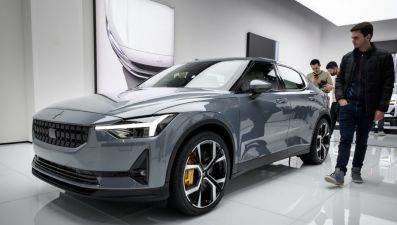
Useful/Useless? Useful, if you really want to bore people at parties…
Voice control
Anyone remember that episode of The Osbournes where Ozzy basically has an argument with the voice control system of his 2001 BMW 7 Series? Yeah, the tech hasn’t come on very far. Voice control is supposed to be the saviour of in-car tech — in theory, it should work like the computer in Star Trek: The Next Generation where you just speak commands at the dashboard which are carried out promptly and efficiently. The sad reality is that, like Ozzy, too often you’ll get locked into a confusing conversation where the car doesn’t quite understand what you want, in spite of car makers’ promises that new technology can understand regular speech as well as specific commands. The big problem is that voice control is being used to paper-over the fact that touchscreens are too often confusing and distracting to use when driving, but car makers don’t want to spend the time and money making physical switches anymore.
Useful/Useless? We’ve yet to try one that’s useful

